Understanding the Differences between AI, ML, and DL
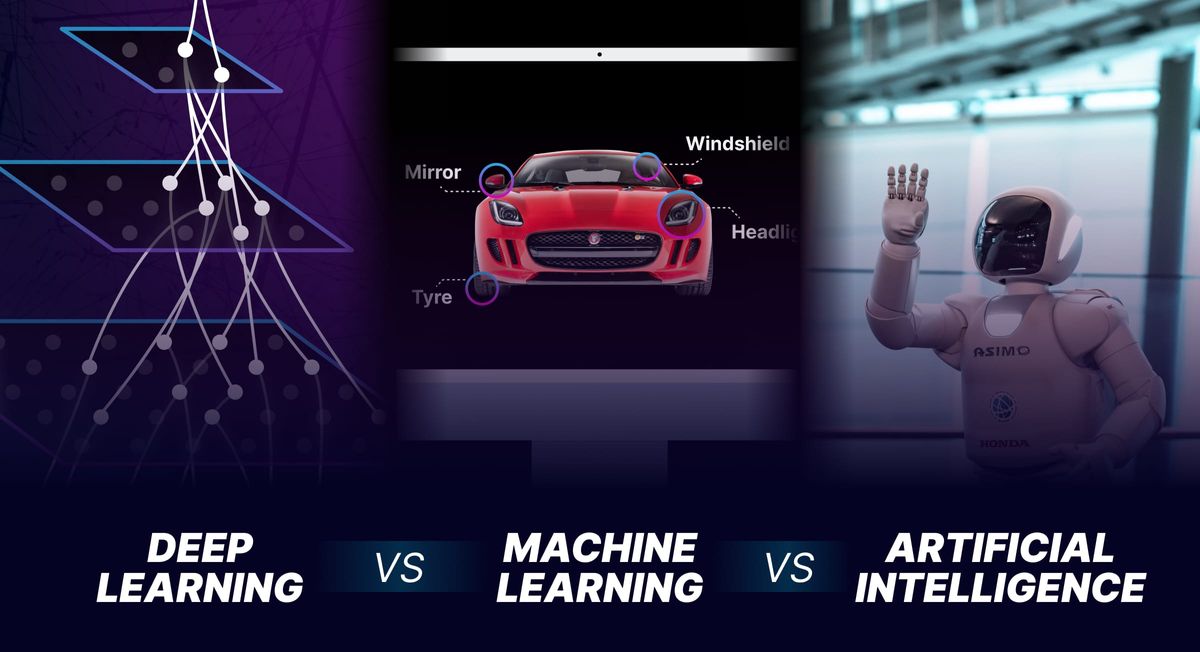
Artificial Intelligence (AI), Machine Learning (ML), and Deep Learning (DL) are hierarchical concepts and inherently related, which means they overlap in various ways.
AI is the broadest concept of the three, encompassing any technique or approach that enables machines to perform tasks that typically require human intelligence. The term AI itself focuses more on the utility of enabling interactions between humans and intelligent machines than on the underlying techniques that make up those machines. AI includes both traditional rule-based systems and more modern learning-based approaches.
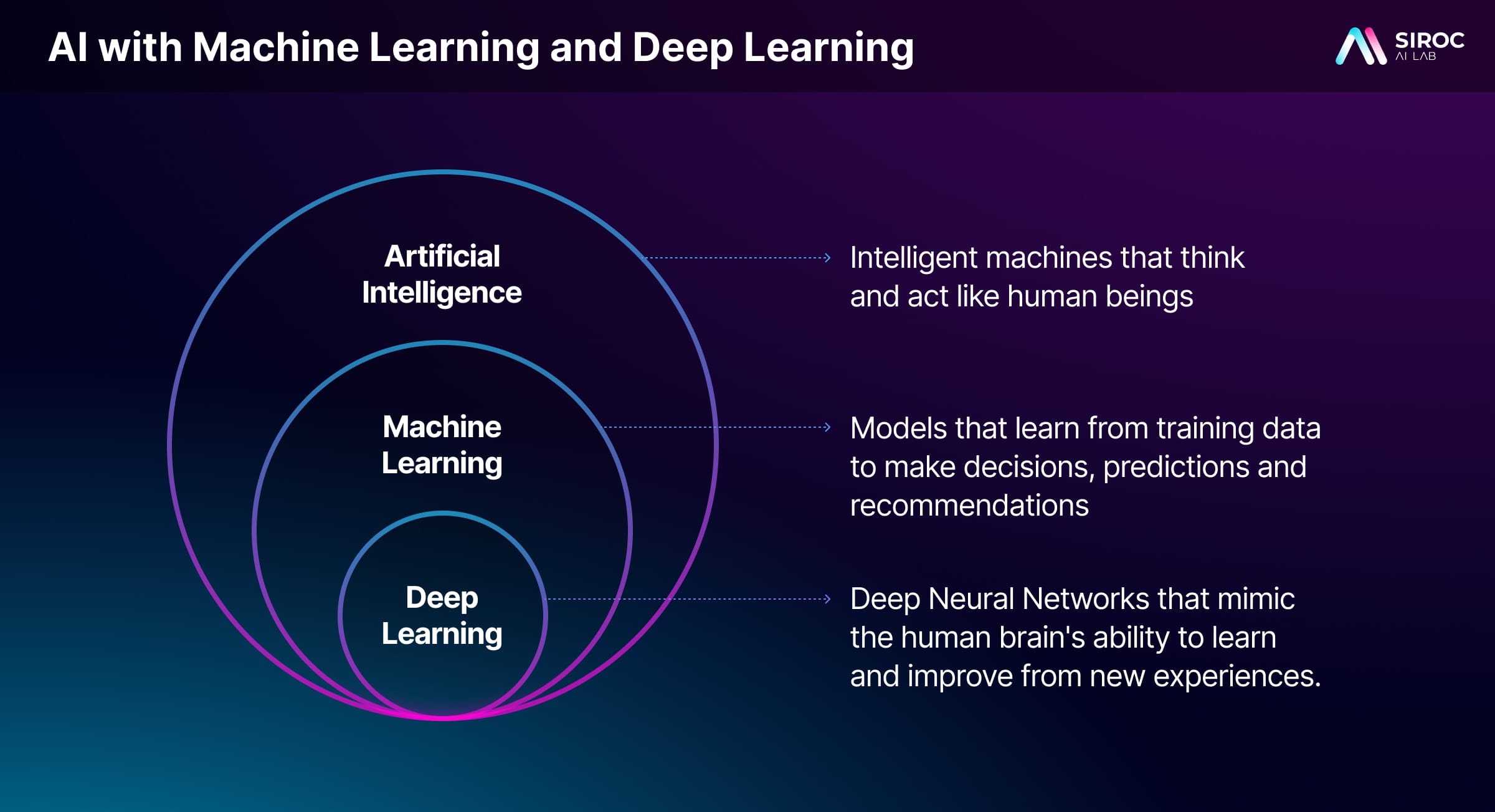
Artificial Intelligence Examples:
- Industrial robots (ABB, Kuka)
- Utility robots (Roomba, lawnmower robots, drones)
- Humanoid robots (Boston Dynamics)
- Self-driving cars (Stanford AI Lab)
- AI assistants: Siri/Alexa, ChatGPT
- Smart interfaces: Auto-complete keyboards, email sorting and filtering, augmented reality (AR), real-time translations, facial recognition and biometric authentication
- Game AI (e.g. chess computer or more advanced video games)
ML is a subset of AI, focusing specifically on algorithms and techniques that enable machines to learn from data and improve their performance over time. Machine learning techniques facilitate AI systems to make decisions, predictions or recommendations. ML covers various learning paradigms such as supervised learning, unsupervised learning, and reinforcement learning.
Machine Learning Examples:
- Spam filtering
- Credit card fraud detection
- Equipment failures prediction
- Speech recognition
- Product recommendations (movies, books, fashion, etc.)
- Financial forecasting
- Anomaly detection (e.g. cancer)
DL is a subset of ML and specializes in using Deep Neural Networks with multiple layers to learn complex patterns and representations from data. These deep neural networks are loosely inspired by the structure and function of the human brain. DL techniques have been particularly successful in tasks involving large amounts of data, such as image and speech recognition, natural language processing, and game playing.
Deep Learning Examples:
- Image recognition
- Image processing: turning a gray image into color
- Generative art (creating images from text)
- Natural Language Processing (NLP): text translation and text generation (large language models)
- Text-to-Speech (TTS)
- Drug discovery (e.g. DeepMind AlphaFold)
- Healthcare: disease diagnosis, prognosis and treatment planning
The overlap between all these fields is primarily in their shared goal of creating intelligent machines that can perform tasks without human intervention.
As AI mainly serves as a comprehensive term, let's concentrate on the specifics of ML and DL and how they set themselves apart.
What is Machine Learning?

Machine Learning (ML) focuses on using statistical methods to enable machines to learn from data and improve their performance over time. It allows machines to make decisions or predictions without explicitly programming the specific rules, thus automating processes and tasks and uncovering valuable insights from complex data.
ML models can already work sufficiently well with relatively small datasets, making it accessible for a wide range of applications. The training process for these models is rather inexpensive, requiring only commodity hardware, such as a laptop, and can sometimes be completed within a few hours. However, the model execution process may grow more complex with larger and more diverse datasets.
In ML, complex problems often need to be broken down into sub-parts, with individual models trained for each part. For instance, object detection, object recognition, and object selection (relevant objects) might each require separate ML models that are then combined into one system. These models are still small and simple enough that their inner workings can be understood, allowing for interpretation and traceability of how an output has been generated.
Machine learning encompasses a range of techniques that can be roughly categorized into five main categories:
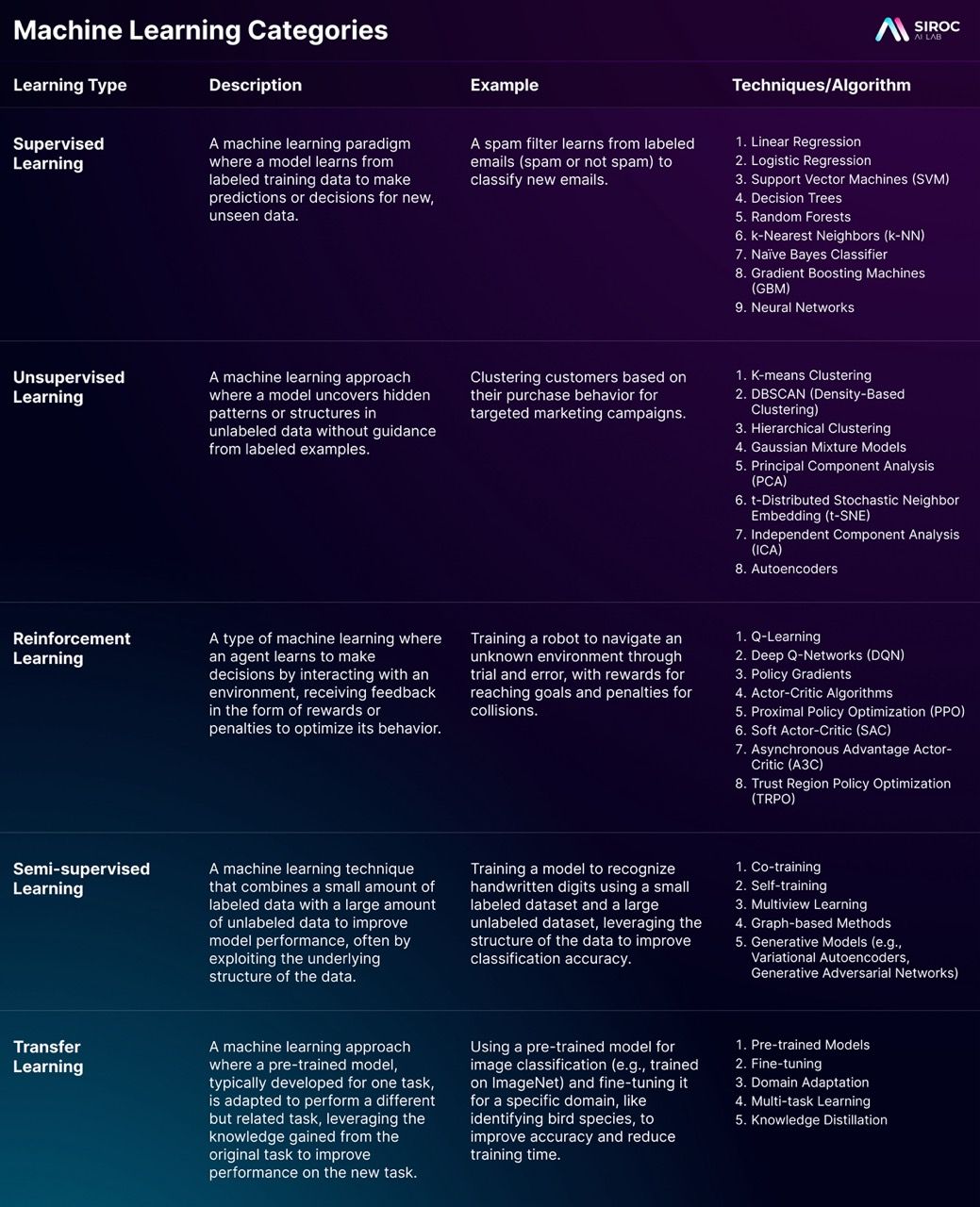
Each of these learning techniques serves different purposes and solves different types of problems. For example, supervised learning requires precise feature identification, which can either be built within the model itself or through a separate process. This learning type is particularly useful when we have labeled data to train the model and want to predict outcomes for new, unseen data.
What is Deep Learning?
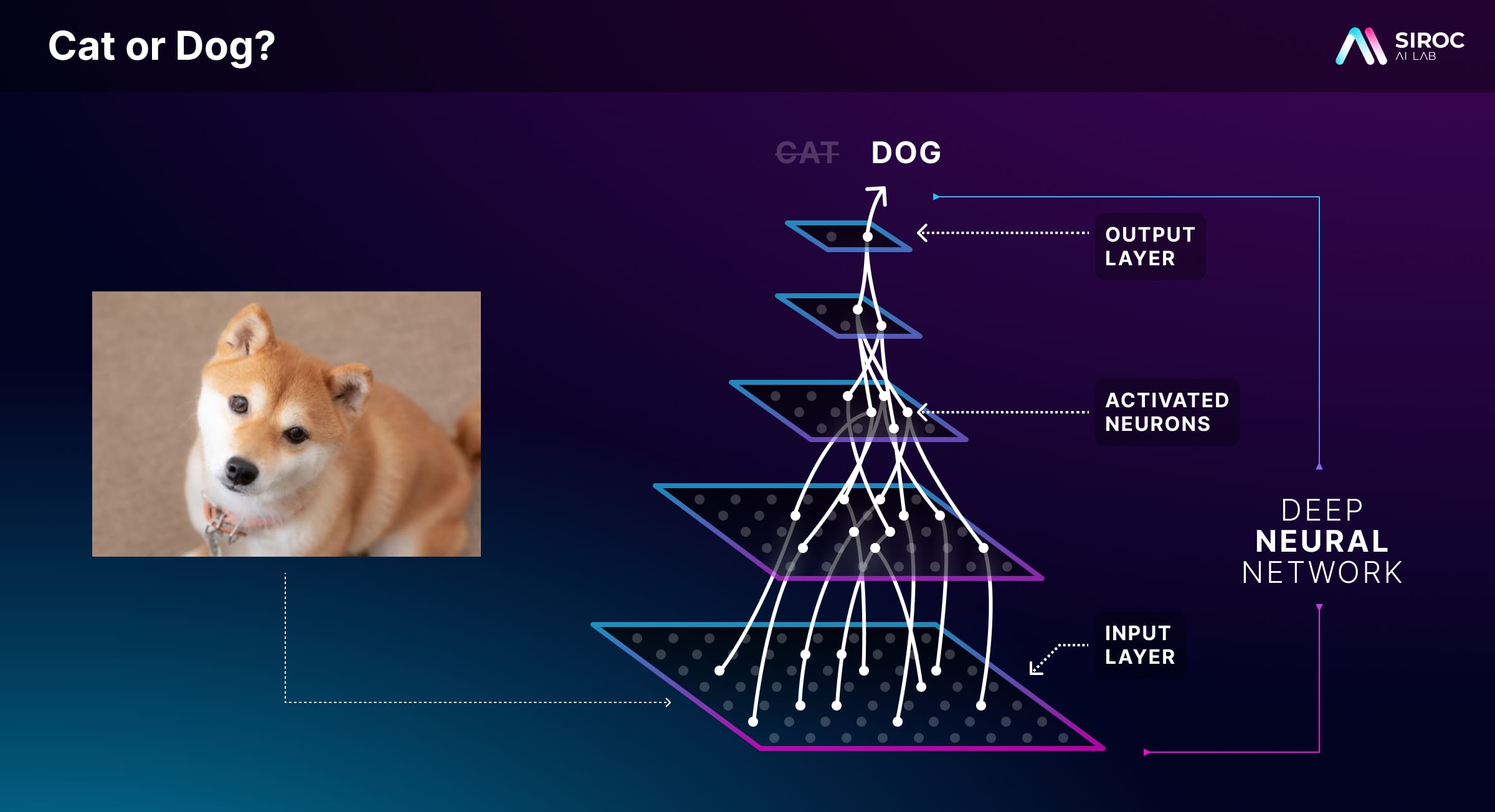
Deep Learning is a subset of Machine Learning that focuses on utilizing Artificial Neural Networks to model complex patterns and representations in data. Inspired by the structure and function of the human brain, Deep Learning enables machines to automatically learn and improve from experience without being explicitly programmed.
Deep Learning models are designed to work with large and complex datasets, making them particularly well-suited for tasks that require a high degree of abstraction or feature extraction. These models often demand high-end distributed systems with custom hardware, such as GPUs or TPUs, to handle the computational requirements of training and deployment.
In Deep Learning, complex problems are addressed using end-to-end architectures, meaning that the entire process, from input to output, is captured within the Neural Network. This eliminates the need to break down the problem into sub-parts and individually train models for each part, as is the case with traditional machine learning.
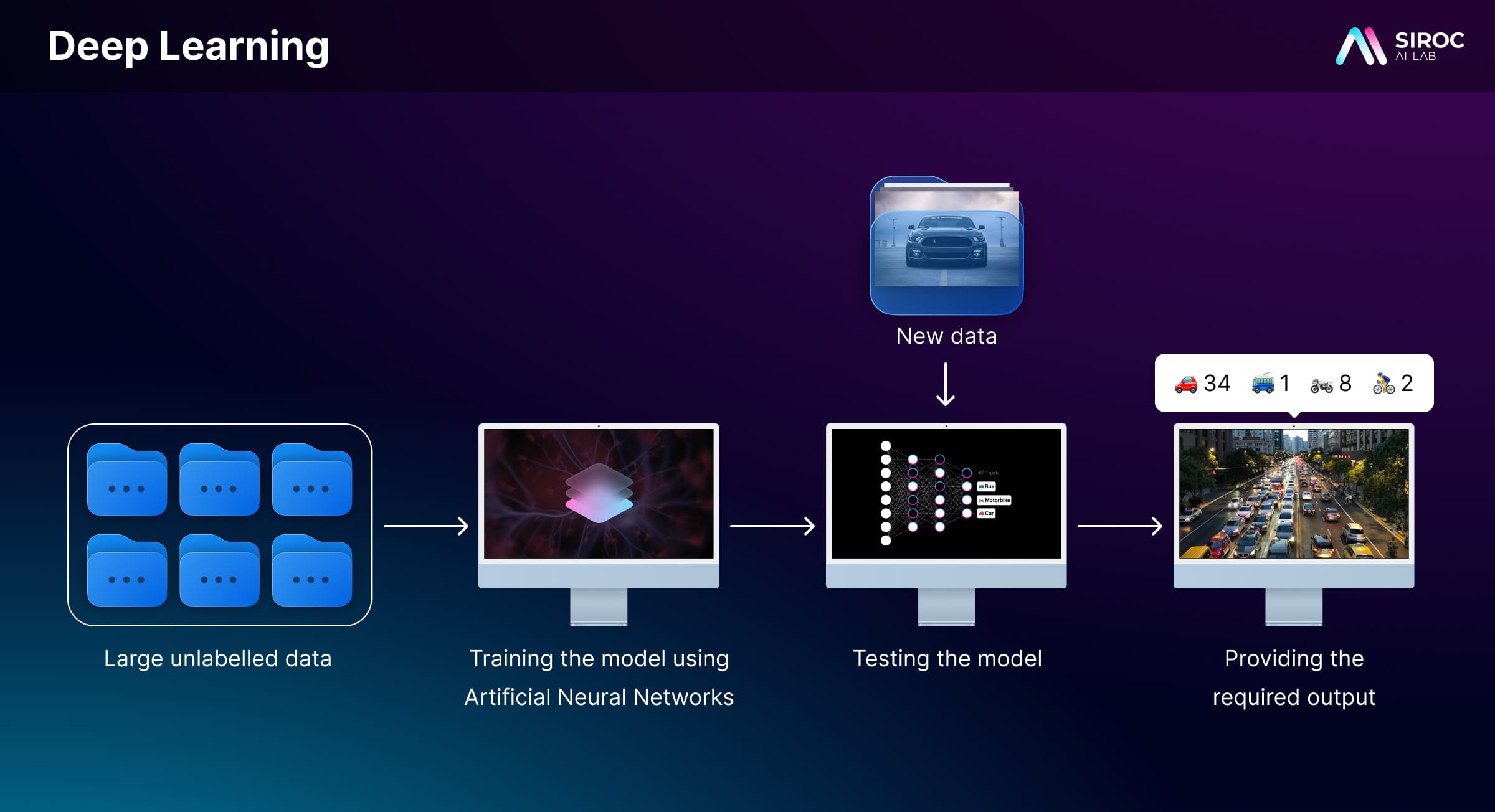
One of the key advantages of deep learning is its ability to automatically learn features from the data it is provided, without the need for manual feature engineering. It begins at a foundational level (for example, identifying edges and lines in images) and progresses to more advanced levels (like recognizing eyes and faces) by employing multiple hidden layers within its Deep Neural Network. This "magic black box" characteristic allows for more efficient and effective modeling, especially when dealing with high-dimensional or unstructured data, such as images, audio, or text.
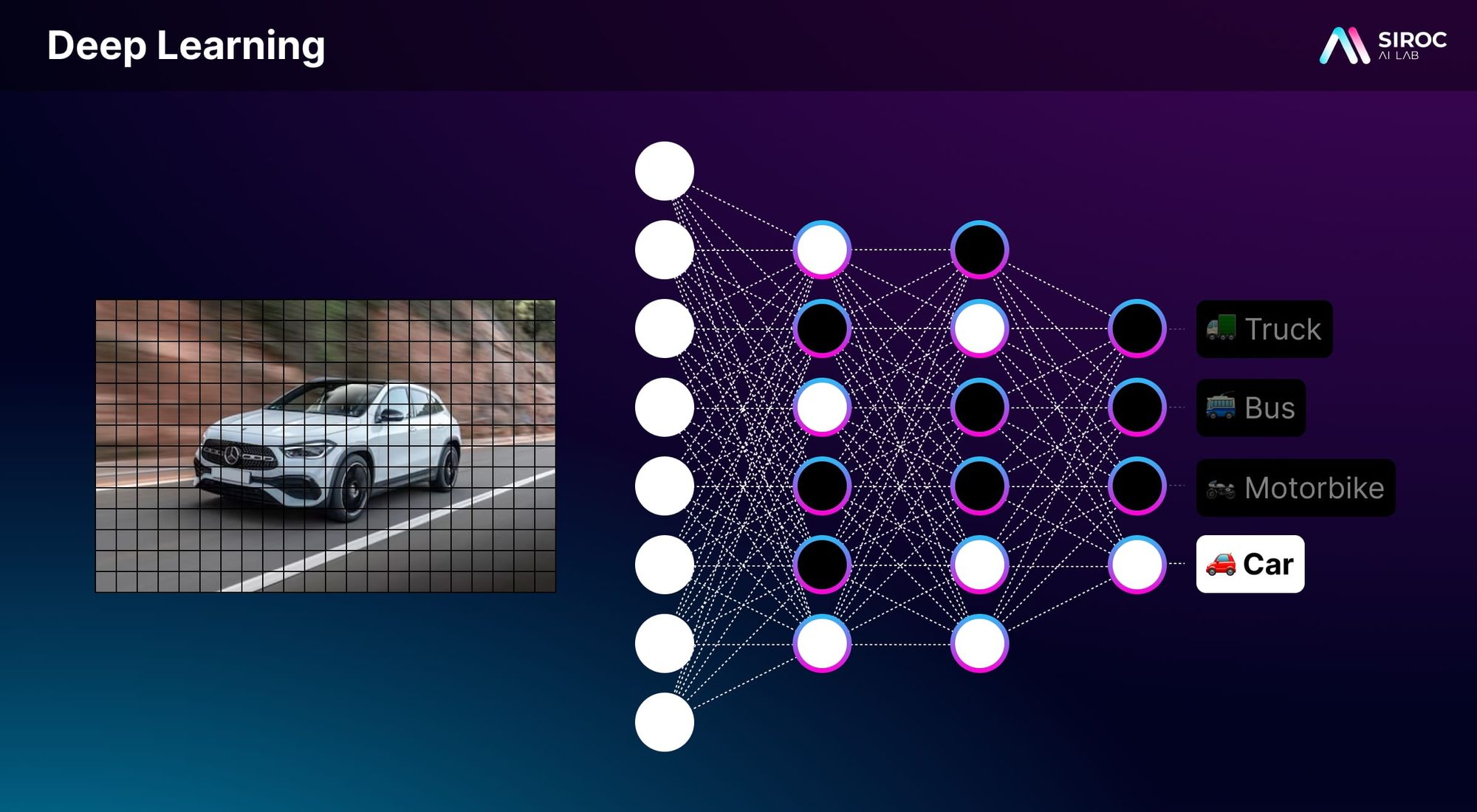
However, this "black box" nature also poses a challenge in terms of interpretability. Although these models are efficient in producing accurate results, the correctness of the outcome is not always guaranteed. In contrast to traditional Machine Learning models, it can be difficult to understand and interpret the reasoning behind a deep learning model's decisions or predictions. This lack of transparency may raise concerns in certain applications where explainability and traceability is crucial, such as healthcare or finance.
Deep Learning has revolutionized various fields, leading to breakthroughs in Computer Vision, Natural Language Processing (NLP), Speech Recognition, and many others. It has emerged as a powerful technique for modeling complex data and solving problems that were previously considered intractable. By leveraging the power of artificial neural networks, Deep Learning allows machines to automatically learn from vast amounts of data, opening up new possibilities for innovation and growth in the era of AI-driven solutions.
Direct Comparison: ML vs DL
In direct comparison, Machine Learning and Deep Learning focus both on enabling machines to learn from data and improve their performance over time. ML typically involves a variety of statistical methods and algorithms that work with small to moderately-sized datasets, while DL deals with larger datasets and more complex models, such as neural networks with multiple layers.
ML is a versatile approach that uses different algorithms for various tasks, such as regression, classification, and clustering. It relies on manual feature engineering and works well with relatively small datasets. In comparison, DL, a subset of ML, employs deep neural networks to automatically extract features from large and unstructured datasets. DL models excel in tasks involving images, audio, or text and often require specialized hardware to handle the increased computational demands.
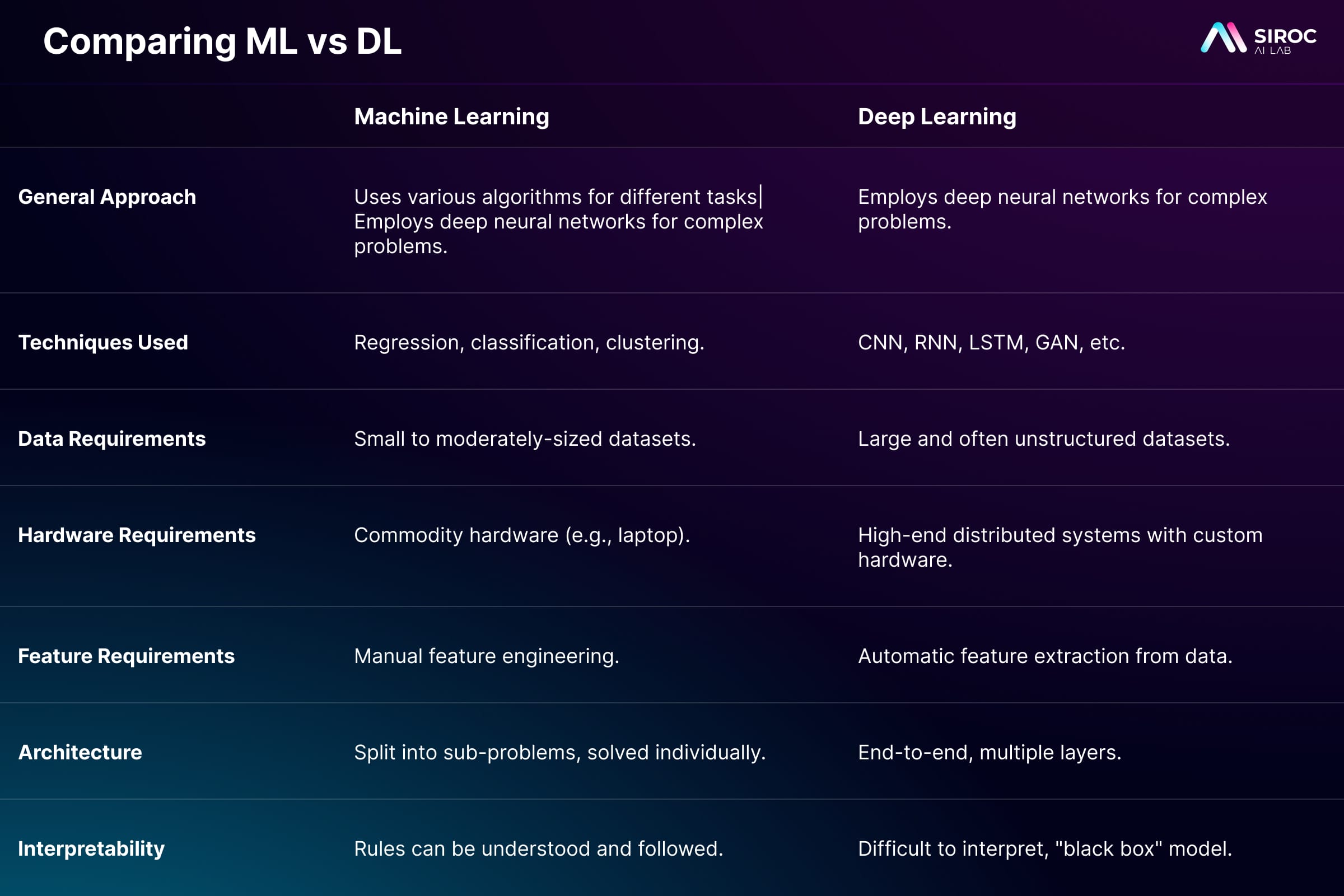
Summary
The overlap between AI, ML and DL is primarily in their shared goal of creating intelligent machines that can perform tasks without human intervention. Machine Learning is a means to achieve Artificial Intelligence, and Deep Learning is a specific approach within Machine Learning that has proven effective for certain types of problems. In real-world AI applications, it's not uncommon to see layers of different ML and DL models chained together. Each model is optimized for a specific problem based on input data and available resources.
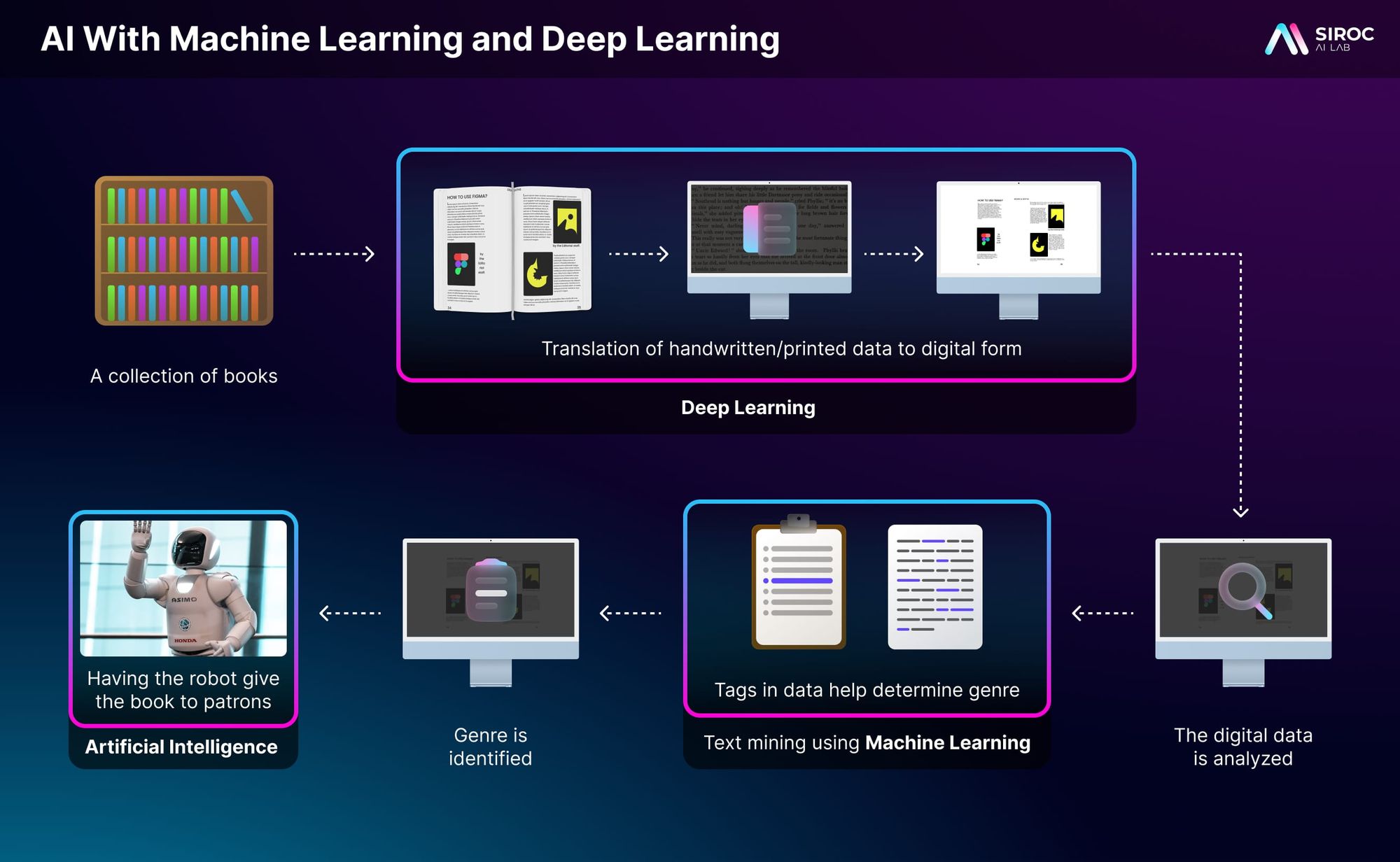
We are living in truly exciting times, as advancements in AI, ML, and DL continue to push the boundaries of what was once considered possible. These cutting-edge technologies have the potential to revolutionize industries, enhance productivity, and improve our quality of life. From self-driving cars to personalized healthcare, language translation to image recognition, the applications of these techniques are vast and varied. As research and development in these fields progress, we can expect even more innovative solutions to emerge, tackling complex challenges and shaping the future in ways we have yet to imagine.
About SIROC
We hope you found this blog post on the differences between AI, Machine Learning and Deep Learning both engaging and enlightening.
If you need assistance or advice with data analytics, data engineering, or integrating ML/DL models into your business, don't hesitate to reach out to us at SIROC. We specialize in developing custom AI solutions tailored to your needs, such as forecasting models, recommender and decision maker models, as well as anomaly detection models.
Not only do we have an extensive collection of pre-trained in-house models, but we also collaborate with industry-leading partners such as OpenAI and Aflorithmic to deliver cutting-edge solutions to optimize and automate your business. Find out more about our products and solutions on our website.
